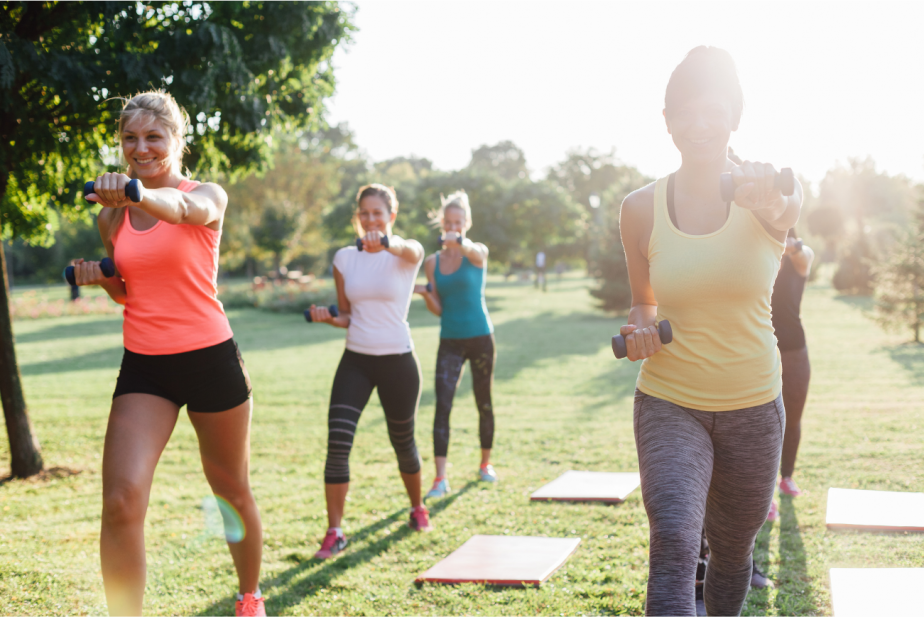We know that changing the way we do traditional exercises is beneficial for the body. Changing the movement pattern will present a different challenge to strength, endurance, flexibility, coordination, agility, balance resulting in improvements in functional mobility. Recent research has shown that performing non-routine movements also provides a greater cognitive challenge than performing traditional exercises. It is safe to say that adding creative changes to regular exercises will be good for the body and the mind!
Unfortunately, teaching creative or more challenging movement patterns can be in itself a challenge, especially when working with older adults. The key to “Teaching Old Dogs New Tricks” is to make one simple change and allow time to master that change. After the class feels confident with that pattern, add a new pattern.
For example:
Repeat the following “traditional” pattern a couple times:
- Knee lifts with knees straight in front 8 cts (alternating R and L)
- Knee lifts with knees wide 8 cts (alternating R and L)
Change the pattern:
- Knee lifts with knees straight in front 8 cts (alternating R and L)
- Knee lifts with knees wide 8cts (alternating R and L)
- Knee lifts with knees straight in front 4 cts (alternating R and L)
- Knee lifts with knees wide 4 cts (alternating R and L)
- Knee lifts with knees straight in front 2 cts (this will be one R in front – one L in front)
- Knee lifts with knees wide 2 cts (this will be one R wide – one L wide)
*The final pattern may be challenging, so continue with the R in front – L in front – R wide – L wide until most people are comfortable.
Now add some creativity:
- R in front – L wide – R wide – L in front
*Continue with this pattern until most people are comfortable.
Some participants will transition from the “traditional” 8 knees in front – 8 knees wide – 4 knees in front – 4 knees wide – 2 knees in front – 2 knees wide very easily, others may find it challenging. The goal is to provide a challenge, while avoiding frustration.
Keeping the transitions easy is key to successfully changing “traditional” exercises into non-routine movement patterns. We can avoid frustration by slowing down. Moving at a slower pace will allow more time for the brain to process the instructions and signal the body to create the movement. The pace can be increased once the participants are comfortable with the new movement pattern.
Some participants will easily flow from the R in front – L in front – R wide – L wide pattern into the final pattern of R in front – L wide – R wide – L in front pattern, while other will find it confusing. Once again, slowing the pace will give them time to learn the new pattern. Another option is to break down the pattern even further.
Return to the previous pattern:
- R knee in front – L knee in front – R knee wide – L knee wide
*Give them time to feel confident with this pattern again
Now change to:
- R knee in front – L knee wide for 8 cts
- R knee wide – L knee in front for 8 cts
- R knee in front – L knee wide for 4 cts
- R knee wide – L knee in front for 4 cts
- R knee in front – L knee wide for 2 cts
- R knee wide – L knee in front for 2 cts
Continuing with the final pattern, you are back to R in front – L wide – R wide – L in front
Adding creative challenges to “traditional” movement patterns is beneficial for physical and cognitive function. Some participants will be able to make the transitions easily, while others may get frustrated and revert back to the familiar pattern. Performing the familiar pattern is OK, but it will not result in functional improvements. It is important to present the changes in a way that limits frustration and allows participants the chance to develop confidence with the new movement pattern. Developing confidence with movement will carry over to activities of daily living and improve overall mobility.

